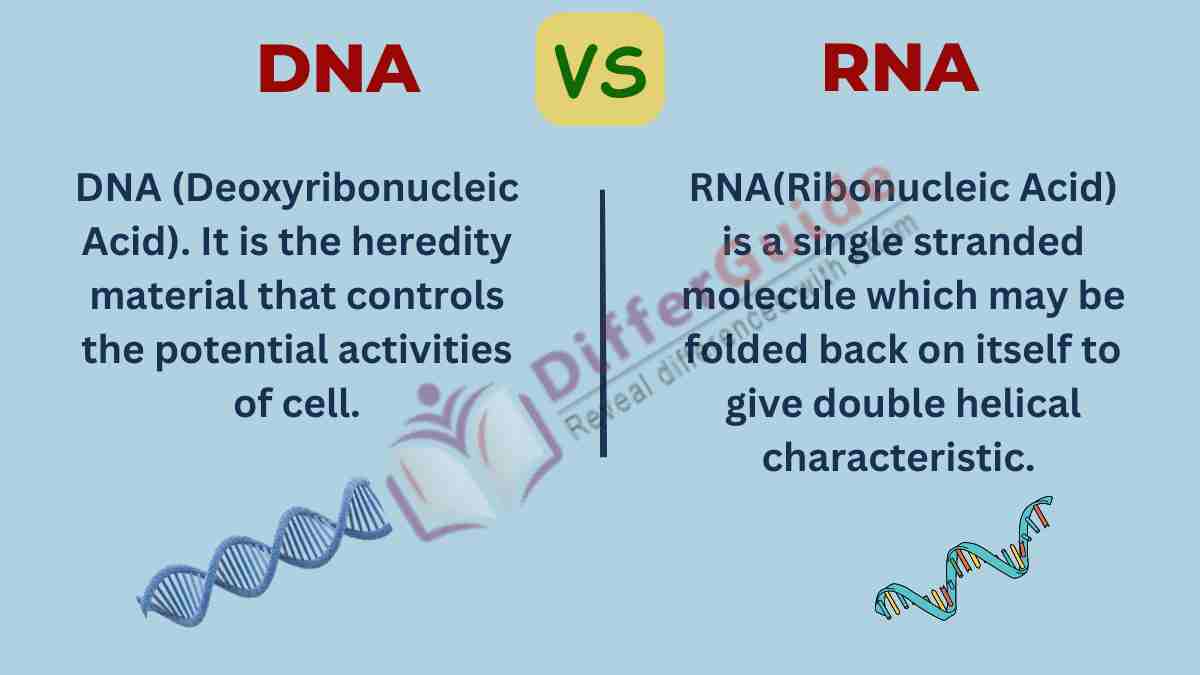The key difference between DNA and RNA is that DNA is a double-stranded molecule while RNA is a single-stranded molecule. RNA is synthesized by DNA in a process known as transcription.

What is DNA?
DNA (Deoxyribonucleic Acid). It is the heredity material that controls the potential activities of cells. It is made of four kinds of nucleotides namely d-guanosine monophosphate, d-adenosine monophosphate, d-cytidine monophosphate, d-thymidine monophosphate.
These are linked with each other through phosphodiester linkage.DNA is a molecule found in all living organisms. It serves as the blueprint of life, containing the genetic instructions needed for growth, development, and functioning.
The structure of DNA resembles a double helix composed of nucleotide units, forming a stable and efficient information storage system.
What is RNA?
RNA(Ribonucleic Acid) is a polymer of ribonucleotides. It is a single-stranded molecule that may be folded back on itself to give a double helical characteristic.
RNA (Ribonucleic Acid) is a molecule essential for various cellular processes in living organisms. It plays a crucial role in protein synthesis by transferring genetic information from DNA to ribosomes, where proteins are assembled.
RNA is single-stranded and consists of four nucleotide bases: adenine (A), cytosine (C), guanine (G), and uracil (U) instead of thymine (T) found in DNA. Besides its role in protein synthesis, RNA can also have regulatory functions, impacting gene expression and controlling cellular activities.
DNA vs RNA
The main differences between DNA and RNA are given below:
| DNA | RNA | |
| Structure | DNA is a double-stranded molecule composed of two antiparallel strands twisted together to form a double-helix structure. | RNA is less stable than DNA due to the presence of a hydroxyl group. |
| Stability | RNA is less stable than DNA due to the presence of a hydroxyl group. | RNA is less stable than DNA due to the presence of a hydroxyl group. |
| Reactivity | DNA is less reactive. | RNA is more reactive. |
| Occurrence | DNA is found primarily in the nucleus of eukaryotic cells, where it is tightly packed into chromosomes. | RNA exists in various forms and is found both in the nucleus and the cytoplasm of cells. |
| Replication | DNA is replicated in a process called DNA replication, which ensures the accurate transmission of genetic information during cell division. | RNA is synthesized from a DNA template in a process called transcription. This allows for the production of RNA molecules that are complementary to specific DNA sequences. |
